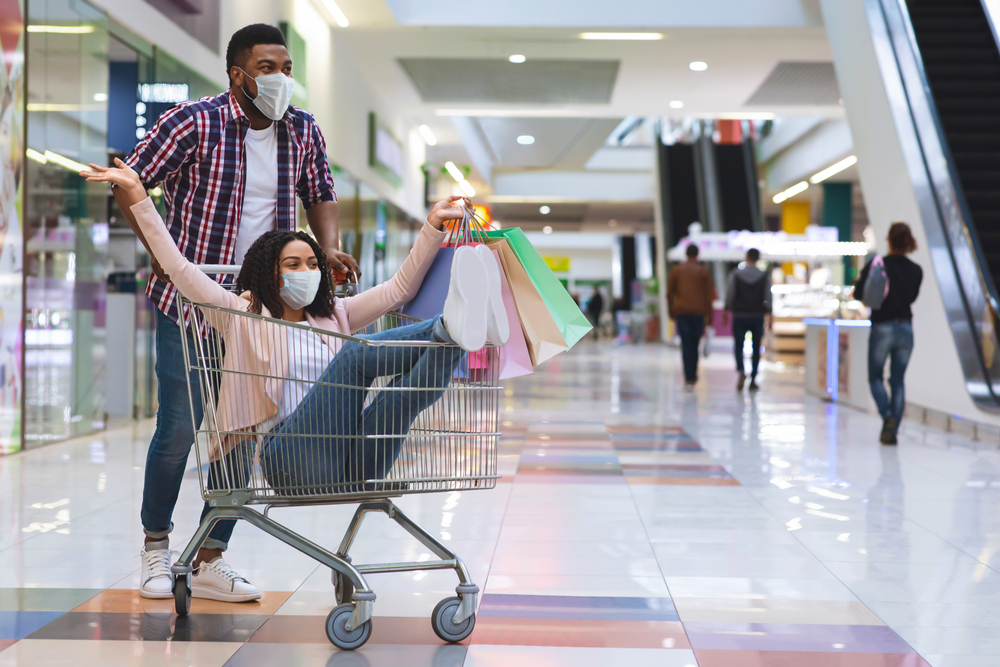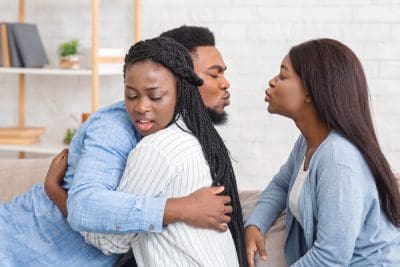The flu virus lurks in unexpected places during everyday shopping trips, from grocery stores to shopping malls. These routine errands, which form an essential part of daily life, can become unexpected hotspots for viral transmission during flu season.
Understanding transmission risks and taking proper precautions can help shoppers stay healthy during flu season while maintaining their regular routines. Whether it’s a quick grocery run or an afternoon at the mall, being aware of potential exposure points and implementing preventive measures makes the difference between a successful shopping trip and an unwanted illness.
The hidden dangers of high-contact surfaces
Shopping carts, door handles, elevator buttons, and payment keypads pose significant risks for flu transmission. These frequently touched surfaces, handled by hundreds of shoppers daily, can harbor the influenza virus for up to 48 hours. The lack of regular sanitization between uses makes these touchpoints particularly concerning.
Protect yourself while shopping by:
- Using provided sanitizing wipes on cart handles and baskets
- Carrying personal hand sanitizer for frequent use
- Avoiding touching your face after contact with shared surfaces
- Opting for contactless payment methods when possible
- Maintaining clean hands throughout your shopping trip
Understanding airborne transmission
Retail environments create perfect conditions for airborne flu transmission. The combination of indoor spaces, limited ventilation, and crowds increases exposure risks. A single sneeze releases thousands of virus-containing droplets into the air, while close-quarter situations like checkout lines enable easy person-to-person transmission.
Risk factors in shopping environments include:
- Crowded aisles and queuing areas
- Enclosed fitting rooms
- Food court seating areas
- Limited air circulation
- Extended exposure time in indoor spaces
Product handling and contamination risks
Items on store shelves carry more than price tags during flu season. Shoppers who are unknowingly contagious may contaminate products they handle, creating a chain of transmission. This risk becomes particularly significant with frequently touched items like produce, clothing, and packaged goods.
The checkout process presents additional challenges. Payment terminals, signature pens, and cash exchanges create multiple touchpoints for virus transmission. The high turnover of customers through checkout lanes increases contamination possibilities throughout the day.
Managing public restroom exposure
Public restrooms in shopping areas require special attention during flu season. These spaces combine several risk factors:
- Moist environments that allow viruses to thrive
- Multiple high-touch surfaces
- Variable hygiene practices among users
- Limited cleaning between uses
- Confined spaces with poor ventilation
Protecting yourself before shopping
Preparation plays a crucial role in preventing flu transmission while shopping. Consider these preventive measures:
Timing and planning
- Schedule shopping during off-peak hours
- Make efficient lists to minimize time spent in stores
- Get seasonal flu vaccinations for baseline protection
- Choose stores with good ventilation and cleaning protocols
Personal protection
- Wear masks in crowded indoor spaces
- Bring personal sanitizing supplies
- Consider wearing gloves for high-risk situations
- Maintain awareness of face touching habits
Post-shopping precautions
Actions taken after shopping help prevent bringing the flu virus home:
- Wash hands thoroughly immediately upon return
- Sanitize frequently touched personal items
- Clean purchased products when possible
- Change clothes after extended shopping trips
- Shower after visiting multiple stores or crowded malls
Special considerations for vulnerable populations
Certain groups face higher risks from flu exposure while shopping:
- Elderly individuals
- Young children
- Pregnant women
- People with compromised immune systems
- Those with chronic health conditions
These individuals should take extra precautions or consider alternative shopping methods during peak flu season.
Community impact
Individual prevention efforts while shopping contribute to broader public health. By following proper precautions, shoppers help:
- Reduce overall flu transmission rates
- Protect vulnerable community members
- Maintain essential retail services
- Minimize healthcare system burden
- Support public health initiatives
Shopping remains an essential activity even during flu season. Understanding transmission risks and implementing proper precautions allows people to maintain their routines while protecting their health. Simple preventive measures, consistently applied, create safer shopping environments for everyone.
This story was created using AI technology.














